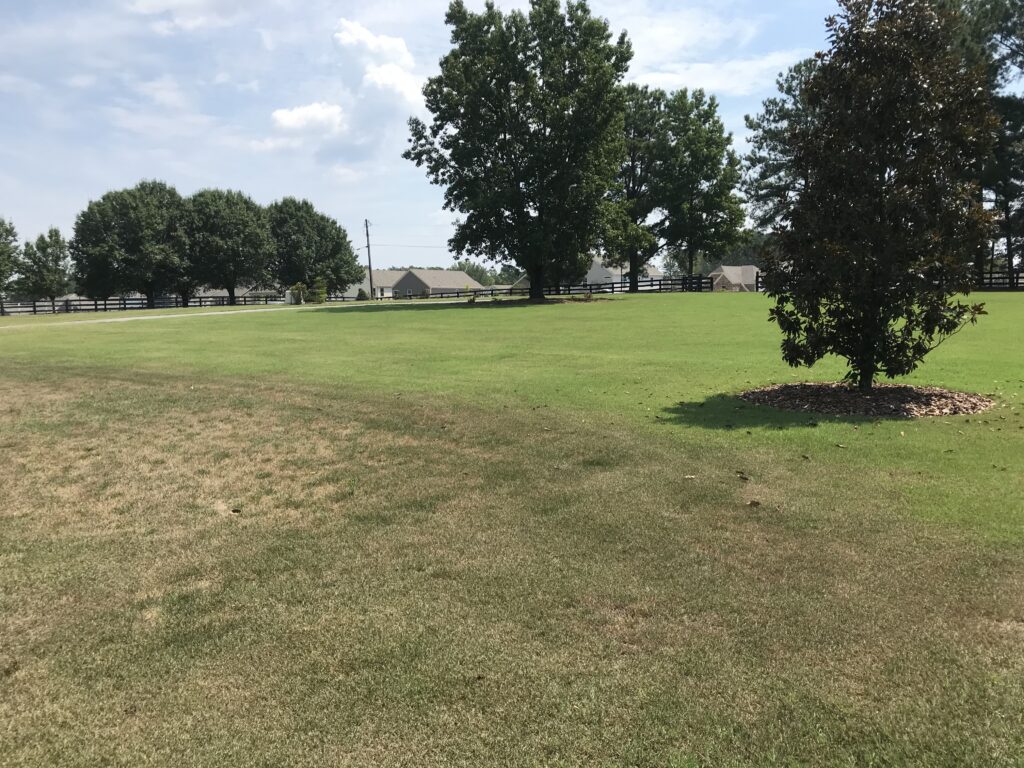Managing Landscape Turfgrasses Under Heat and Drought Conditions
go.ncsu.edu/readext?1011060
en Español / em Português
El inglés es el idioma de control de esta página. En la medida en que haya algún conflicto entre la traducción al inglés y la traducción, el inglés prevalece.
Al hacer clic en el enlace de traducción se activa un servicio de traducción gratuito para convertir la página al español. Al igual que con cualquier traducción por Internet, la conversión no es sensible al contexto y puede que no traduzca el texto en su significado original. NC State Extension no garantiza la exactitud del texto traducido. Por favor, tenga en cuenta que algunas aplicaciones y/o servicios pueden no funcionar como se espera cuando se traducen.
Português
Inglês é o idioma de controle desta página. Na medida que haja algum conflito entre o texto original em Inglês e a tradução, o Inglês prevalece.
Ao clicar no link de tradução, um serviço gratuito de tradução será ativado para converter a página para o Português. Como em qualquer tradução pela internet, a conversão não é sensivel ao contexto e pode não ocorrer a tradução para o significado orginal. O serviço de Extensão da Carolina do Norte (NC State Extension) não garante a exatidão do texto traduzido. Por favor, observe que algumas funções ou serviços podem não funcionar como esperado após a tradução.
English
English is the controlling language of this page. To the extent there is any conflict between the English text and the translation, English controls.
Clicking on the translation link activates a free translation service to convert the page to Spanish. As with any Internet translation, the conversion is not context-sensitive and may not translate the text to its original meaning. NC State Extension does not guarantee the accuracy of the translated text. Please note that some applications and/or services may not function as expected when translated.
Collapse ▲I’m increasingly seeing drought-stressed turfgrass in eastern NC. The US Drought Monitor of North Carolina on July 2nd, has two-thirds of the state state in “moderate drought”, with pockets of the state in a “severe drought”. With high temperatures and little to no rain in the immediate forecast, I anticipate the drought levels to increase statewide in the coming weeks. The result will likely be more brown lawns.
High temperatures cause cool-season grasses like tall fescue or Kentucky bluegrass to photorespire. This results in a heavy energy toll on the plant, even when adequate soil moisture is available to the turf. High heat with a drought is more problematic for cool-season grasses. While these grasses are capable of going semi-dormant under drought conditions, they are more likely to be severely damaged than warm-season grasses if under prolonged heat and drought.
Heat alone is generally not problematic with warm-season turfgrasses unless there is low soil moisture or a restricted rootzone. In many NC landscapes, the turfgrass is not irrigated. In those instances, all the locally grown turfgrass species may begin to brown under our current conditions. Zoysiagrass will often brown before bermudagrass, even though long-term drought tolerance may be similar. Centipedegrass and St. Augustinegrass may initially handle drought conditions due to having stolons, but will suffer more than zoysiagrass and bermudagrass over time. All warm-season grass species may turn brown and then slowly green up with the return of favorable soil moisture. Even though the grasses may currently be more brown than green, they can usually handle appreciable dry conditions in terms of survival.
Depending on your irrigation capacity and current level of irrigation restrictions, you can either irrigate to maintain growth and green color or irrigate for turf survival, allowing the turfgrass to go semi-dormant to dormant. Turf survival under drought conditions is affected by turf species, turf age, rooting depth, soil type, shade, maintenance practices, traffic, and heat, so it is difficult to provide an exact minimum watering plan to ensure survival under severe drought conditions.
Common recommendations indicate that turf this time of year needs approximately 1 inch of water per week from irrigation or rainfall. (Actual summer evapotranspiration rate (ET) rate may approach 2 inches per week if soil moisture is readily available). The 1 inch is an approximate amount to irrigate if you want to keep the turf green and growing, but it may take even more if the goal is optimum quality. Set your controller to water between 10:00 p.m. and 8:00 a.m. to improve efficiency. If you pull water from a city water system and have low water pressure, it is typically better to water at night rather than early morning when the water demand is high. Check your irrigation system for evenness of distribution and put out a few catch containers to verify the application rate (amount). You can fine tune the application by not watering again until you see turf turning bluish-gray in the heat of the day. If you are under water restrictions, then you may need to hand water those areas that show visual signs of heat and moisture stress until your next allowed irrigation.
If you decide to minimally water during the heat/drought period, then apply ½ inch of water every two to three weeks to keep the turf crowns hydrated. This amount will not turn the turf green, but it will increase its chance of survival. Avoid herbicides and fertilizers until rains resume. Also, keep vehicle traffic (including riding mowers) off the turf when it is under severe drought stress.



